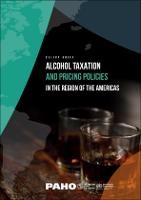Policy Brief: Alcohol Taxation and Pricing Policies in the Region of the Americas

The need to reduce alcohol-related harms has been recognized by the 2010 World Health Organization (WHO) Global Strategy to Reduce the Harmful Use of Alcohol (adopted by the Sixty-third World Health Assembly), the United Nations Sustainable Development Goals, the WHO Global Action Plan for the Prevention and Control of Noncommunicable Diseases 2013-2020, and the Pan American Health Organization (PAHO) Plan of Action to Reduce the Harmful Use of Alcohol.
The amount and frequency of alcohol consumed by an individual are determined, in large part, by the affordability of alcoholic beverages.
Thus, alcohol excise taxation (taxes which only apply to alcohol) is the most cost-effective policy to prevent alcohol-related harms by reducing alcohol consumption, delaying and/ or preventing the initiation of drinking.
This publication addresses the following issues:
- Alcohol consumption and its impact on health in the Americas
- The effects of excise taxation on alcohol consumption
- The effects of increasing alcohol prices through taxes on alcohol-related harms
- Cost-effectiveness of alcohol taxation
- Types of alcohol taxation
- Effects of alcohol taxation on subpopulations
- Alcohol taxation and pricing in the Americas
- Other considerations of taxation
